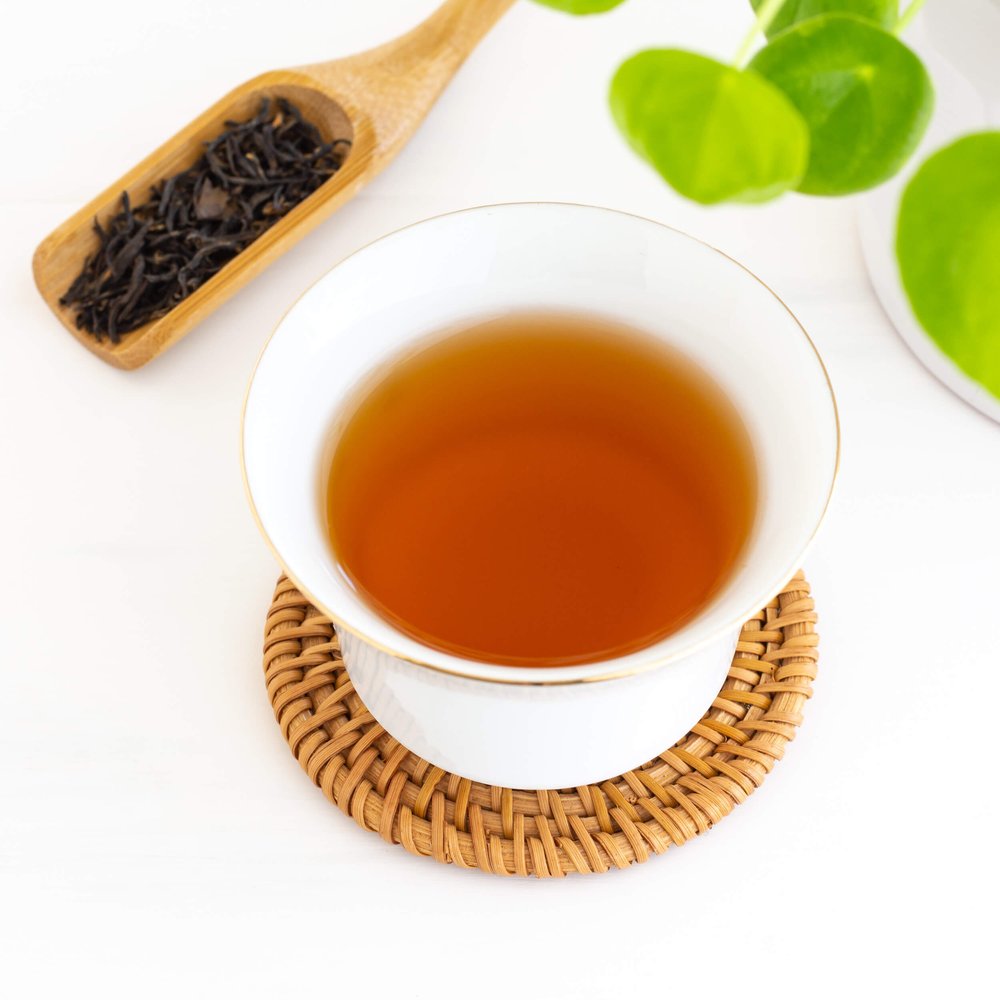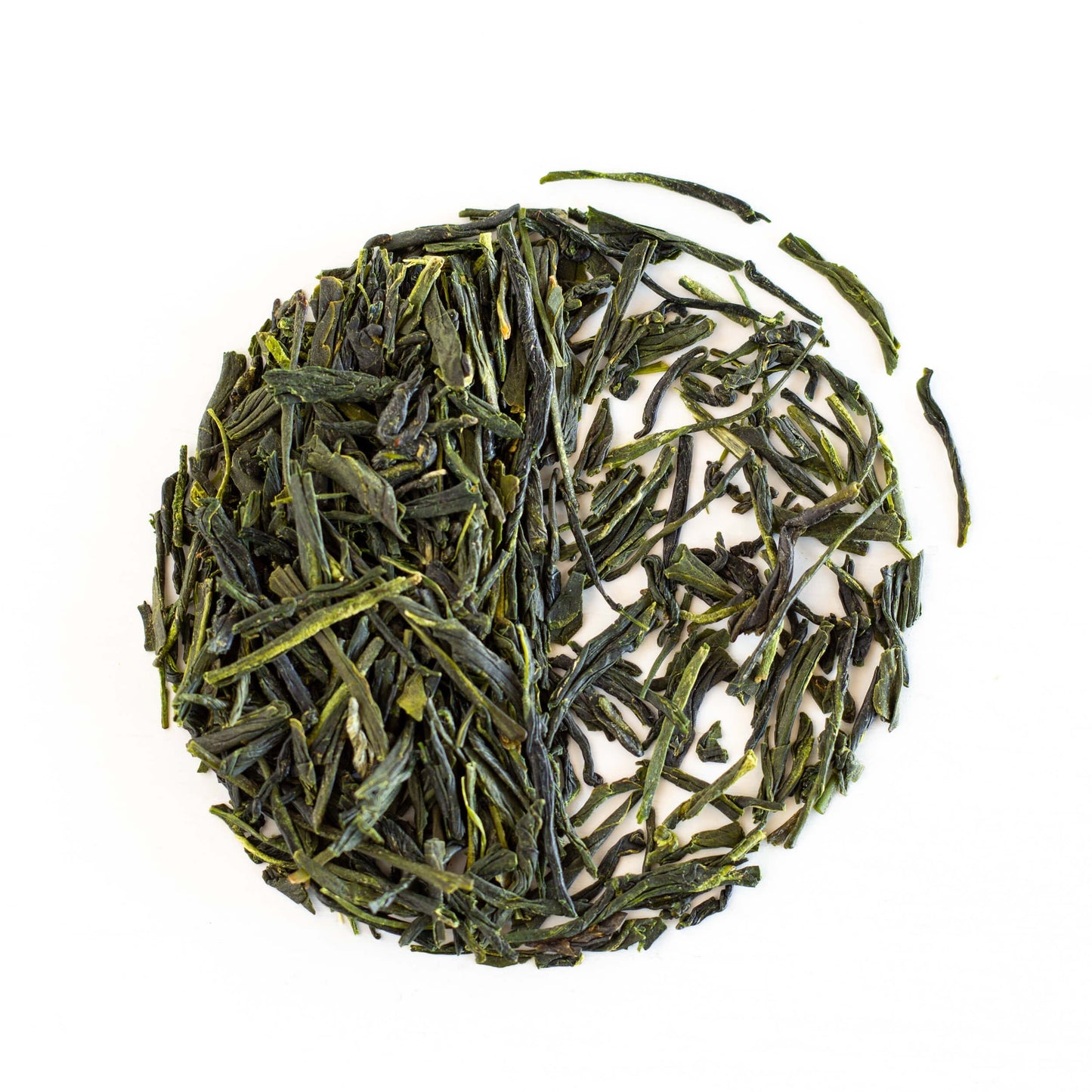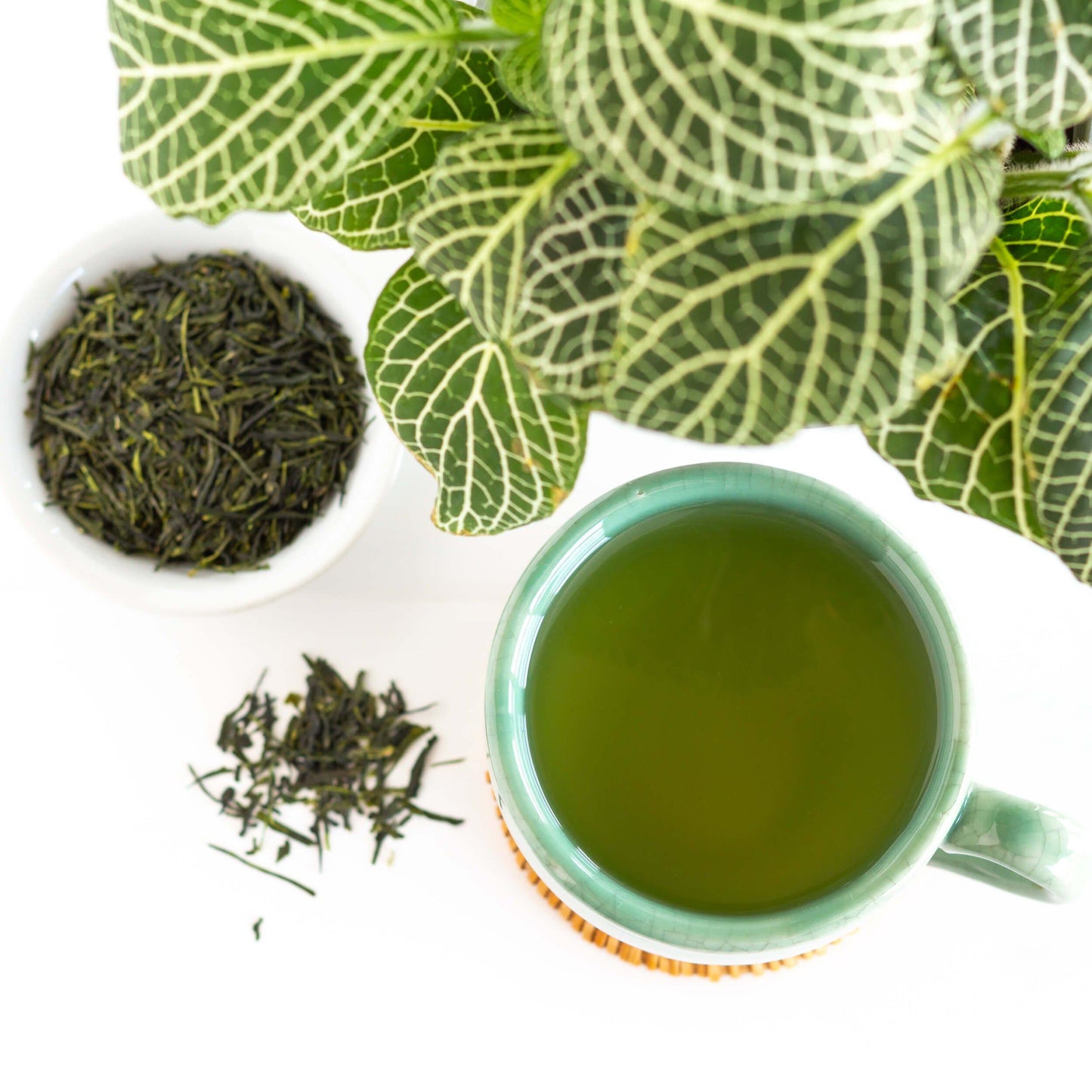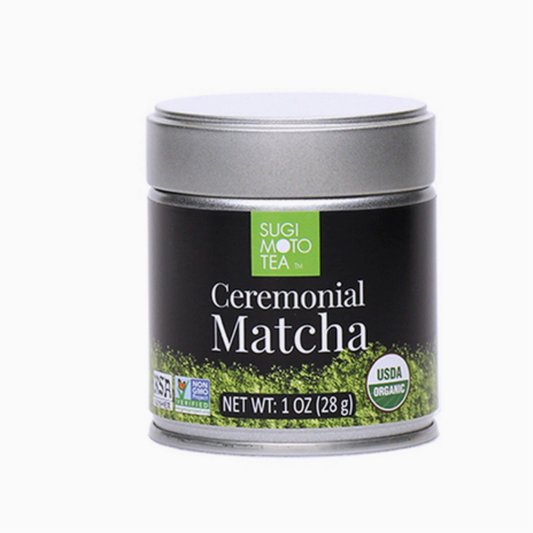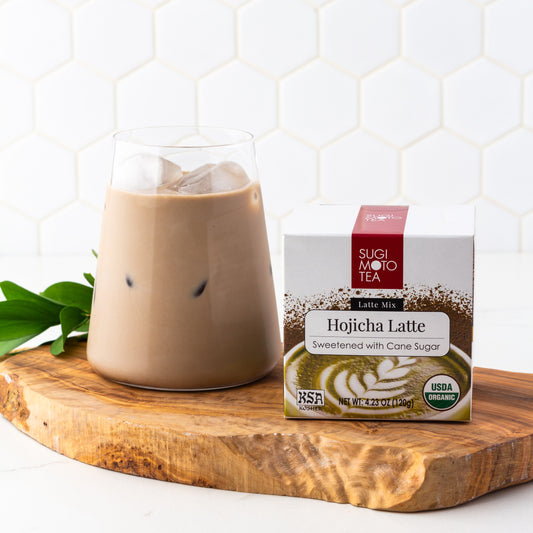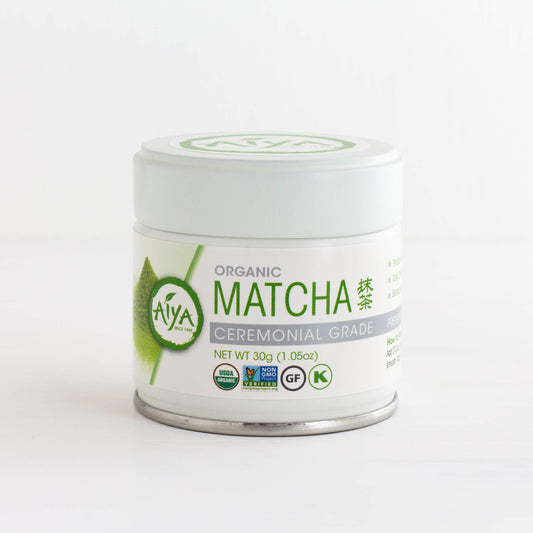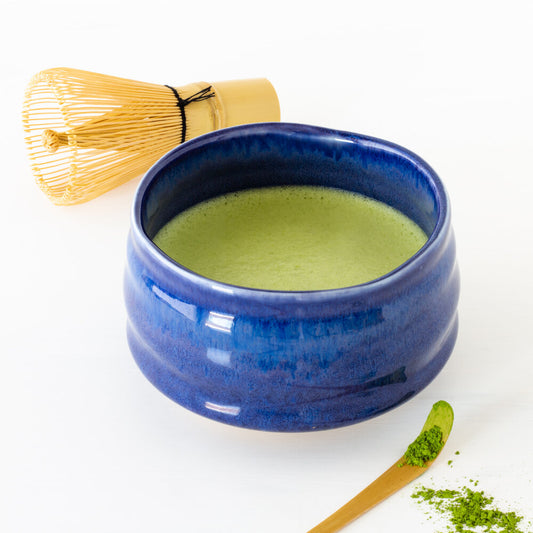Matcha vs. sencha: the basics
Matcha and Sencha are both from Japan, they’re both green teas, and they both have similar flavor profiles. The most important difference is that matcha is made from shaded tea leaves that are stone-ground into a fine powder, while Sencha is made from whole tea leaves that have not been shaded.
Sencha is:
- From Japan
- Prepared using whole tea leaves from the camellia sinensis plant
- Leaves are steamed to halt oxidation
- Infused in a pot or cup
- Low in caffeine
- High in antioxidants
- Sencha is oceanic and fresh, with creamy, tomato, citrus, and seaweed notes and a lively and astringent finish
Matchs is:
- From Japan
- Produced from shade-grown tea leaves
- Leaves are steamed and then ground into a fine powder
- Whisked in a bowl with hot water, or added to smoothies, lattes, and baked goods
- High in caffeine
- High in antioxidants
- Matcha has a smooth, rich flavor with notes of umami and just a hint of bitterness
What is sencha?
Often considered the most widely consumed tea in Japan, sencha is produced from leaves from the first and second harvest of the tea plant, and has a bright, vegetal character with a sweet finish. Sencha is a loose leaf tea, which means that, to brew the tea, whole tea leaves are infused in hot water.
Because Sencha is infused rather than consumed whole, it has a lighter, mellower flavor than matcha. Sencha tea leaves are not shaded prior to harvest; this means that they don’t have as pronounced of an umami flavor as matcha does.
What is matcha?
Matcha is a fine powder made from green tea leaves. Like some other Japanese green teas, matcha is shade-grown for the last few weeks leading up to the harvest, resulting in a bright green leaf with a rich, slightly sweet flavor. Matcha is stone-ground into a bright green powder that can be consumed with water or added to flavored drinks and baked goods. When prepared traditionally, matcha powder is whisked with hot water in order to form a frothy, savory beverage that can be drunk straight from the bowl.
Is green tea powder different than matcha?
In most cases, green tea powder is just another name for matcha. Matcha is made from green tea leaves that are stone-ground into a fine powder. When describing drinks and culinary confections using matcha, people often describe them as “green tea” flavored, as in a “green tea latte” or “green tea ice cream,” even when matcha is used.
However, if you see a product labeled as “green tea powder” instead of matcha, you should steer clear. Matcha is made from a particular kind of green tea leaves that have been carefully cultivated and shaded for several weeks prior to harvest. This is what gives matcha its deep green color and rich, umami flavor. A tea labelled as “green tea powder” that doesn’t specify whether or not it’s matcha is likely made from inferior quality tea leaves that have not undergone the same process. “Green tea powder” may be made from sencha or another type of Japanese green tea.
Matcha vs. sencha benefits
Sencha and matcha both contain many of the beneficial properties of green tea. These include:
- High in EGCG
- Boosts energy
- Reduces stress
- Improves cognitive function
- Good for your teeth
- Good for your metabolism
- High in antioxidants
- Good for your heart
- Improves longevity
- Good for your skin
- Boosts your immune system
- Reduces inflammation
- Good for digestion
However, matcha contains much more concentrated amounts of these beneficial properties. This is because, when you’re drinking matcha, you’re actually consuming the whole tea leaf. When you’re drinking sencha, you’re just drinking an infusion. While sencha is still good for you and full of flavor, matcha packs the bigger punch in terms of benefits.
Sencha vs. matcha caffeine
Similarly, matcha is much higher in caffeine than sencha. Again, this is because when you’re drinking matcha, you’re drinking the whole tea leaf. All teas produced from the camellia sinensis tea plant contain some amount of caffeine. Matcha’s caffeine levels are especially high because of the shaded growth period the plants undergo before harvest, which increase the amount of caffeine present in the leaves.
Sencha vs. matcha taste
Matcha and sencha have a similar flavor profile, with a few important differences. Matcha has a bright, vegetal, and slightly bitter taste, with notes of sweetness and umami. It is much richer and more concentrated than sencha, with elevated umami and astringency.
Sencha tends to be lighter and mellower than matcha, while still having a similar vegetal, slightly grassy flavor. Depending on the particular cultivar and harvest, sencha is sometimes described as having citrus and tomato-like notes.
Our sencha
From Shizuoka on the Fujiyama mountain slopes, our Sencha is a classic example of a Japanese green tea. Sencha is one of the most popular green teas in Japan, and for good reason. This tea has a medium body and brews up into a pale green-gold liquor, with citrus and oceanic notes.
Our matcha
We carry several different types of matcha. These include:
- Ceremonial grade matcha: Ceremonial grade matcha is premium quality matcha designed to be enjoyed on its own. We carry both Aiya ceremonial grade matcha and Sugimoto Mizuki ceremonial grade matcha.
- Culinary grade matcha: Our culinary grade matcha is a great fit for smoothies, lattes, baked goods, and more.
- Matcha to go: These handy little matcha sticks require no sifting—just add them to your water bottle, shake, and go!
